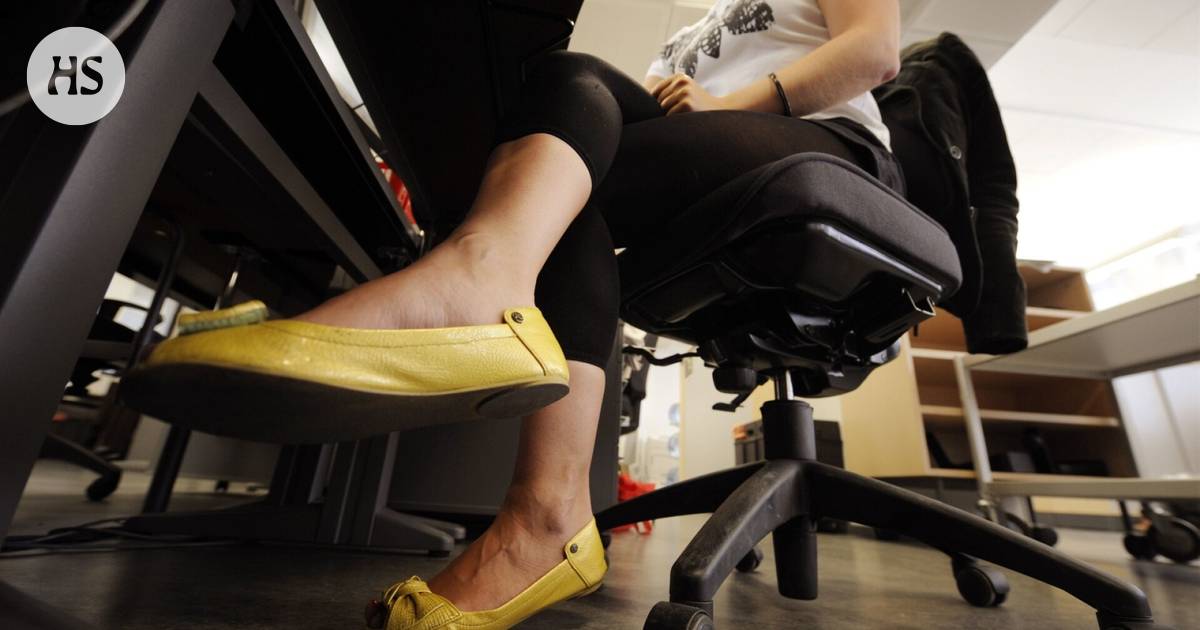Health exercise|The harmful limit was defined as around ten hours based on extensive monitoring.
The summary is made by artificial intelligence and checked by a human.
A US study determined the limit to the risk of being sedentary for heart health.
Sitting for more than 10 hours a day increases the risk of heart disease.
More than 3,600 of the subjects had atrial fibrillation, 1,900 heart failure and 1,600 heart attacks.
What the more time a healthy person spends sitting and lying down, the greater the risk he has at some point in his life of having heart problems.
Now a US study has determined the limit after which the risk of immobility increases significantly: Just over ten hours a day. This is what it ended up being researchwhich was introduced recently At the American Heart Association meeting in Chicago.
Sitting still for more than ten hours increases the risk even for people who exercise according to the recommendations.
Results based on this, you should avoid a lot of sitting still, because it can increase the risk of cardiovascular diseases, says the cardiologist Shaan Khurshid in a statement.
“Excessive sitting or lying down can be harmful to heart health; even for those who are otherwise active”, summarizes Khursid.
According to Khursid, public health guidelines should in the future emphasize that citizens must reduce the number of hours they spend sitting and lying down every day. According to him, a “realistic goal” would be to avoid standing still for ten hours every day.
Insufficient exercise is known to increase the risk of cardiovascular diseases. That’s one risk factor.
In the United States, more than 150 minutes of exercise per week is recommended, which should be moderately strenuous or strenuous.
in Finland
FAQ Institute
has been along the same lines. It recommends for adults the same 150 minutes of heart-rate-increasing movement, that is, brisk movement.
The same health benefits can also be obtained by increasing the intensity of movement to a strenuous level, in which case 75 minutes a week is sufficient. Muscle fitness should be practiced at least twice a week.
Exercise however, practicing alone is not enough, it is also good for a person to be active in one way or another.
In the recommendations, it is advised to avoid excessive and long-term sitting still, comments the director of the UKK Institute, Doctor of Medicine Tommi Vasankari.
“You can move enough, but stay still too much and vice versa,” Vasankari commented in an email. The recommendations have not yet specified an absolute excessive number of hours for standing.
“But it is known that as the amount of stationary increases, the resulting disadvantages increase. In the studies conducted by Ask, seven hours a day have already been found to cause major health problems, but it is not a general limit value.”
Research viewed by nearly 90,000 people. Their data is from the British Biobank. The average age of the research group was 62. There were slightly more women than men.
The subjects were monitored with a smart device worn on the wrist, which recorded movement for seven days. The subjects were followed for an average of eight years. The subjects spent an average of 9.4 hours per day sitting still.
More than 3,600 of the subjects were found to have had a heart attack at some point atrial fibrillation and more than 1,850 have heart impairment. More than 1,600 got it myocardial infarction. About 850 of those followed died of heart disease.
According to the release, the risk of heart failure and death related to heart disease increased “significantly” for those who were sedentary for more than 10.6 hours during the day. It was defined as a threshold value. The increase in the risks of various ailments varied according to how many sedentary hours there were.
Shortening the time spent on the spot by even half an hour every day reduces the risk of heart problems, sums up the doctor of medicine who commented on the study Charles Eaton in the bulletin. He refers to sitting in the bulletin.
Exercise or activity does not even have to be a sweaty effort, but even light movement is enough to reduce the risk somewhat.
In research has its shortcomings. The tracking did not tell exactly how people were in place, whether they were sitting or lying down. Or were they even standing still when the tracker said they were stationary.
On the other hand, the tracking device tells you how much a person moves per day. People tend to overestimate their movement and underestimate their lounging, says Eaton.
